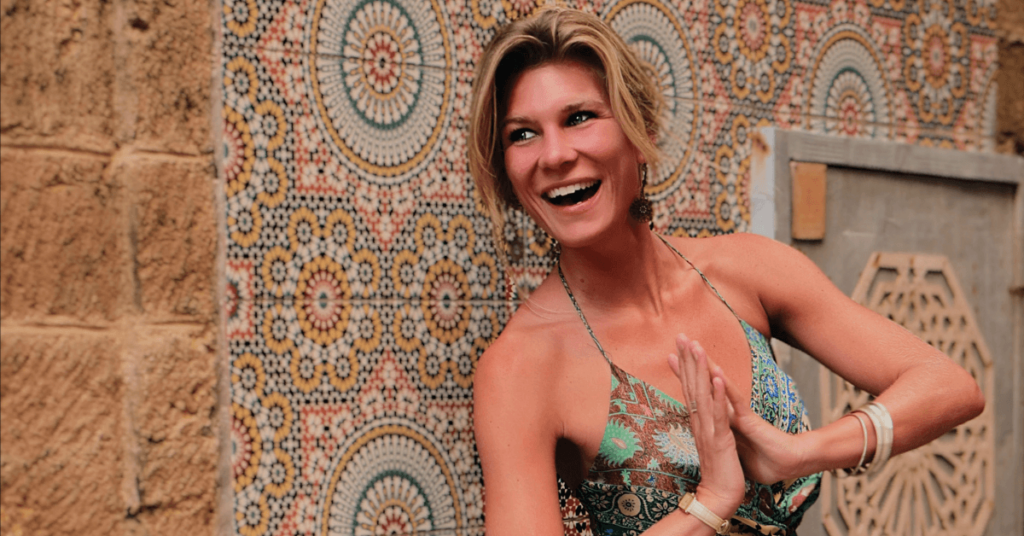Journal question:
Think of a class or teachers you absolutely loved. Why did you love it so much? Think of
three key elements that stood out to you (e.g. asanas, voice, wording, music, etc.).
Remember who you are and what brought you here – your truth is your voice!
Every person is different. Every practitioner is different. So is every yoga school and all of their teachers. You don’t need to ‘play’, ‘copy your teacher’ or get into the ‘role of a yoga teacher’ or have years of experience to offer excellent classes. The best classes I have received were by teachers that were true to themselves, devoted to their practice and honest with their fellow yogis. I’ve also had inexperienced teachers who I trusted more than experienced ones, because their sense of responsibility and motivation to do better each time showed me they were engaged in my learning and teaching me in a careful way
You don’t need to have all the answers to be an effective teacher
You can’t know everything and you never will! Neither do you have to be an expert in every aspect of yoga. We all have our own talents and things we’re good at. Which is a beautiful thing that unites us and helps us grow together, alongside each other day after day.
Focussing on what you’re passionate about, what you’re good at and staying open to development, especially these aspects, will help you stand out and find your own voice. As well as this, it’ll offer constant inspiration for your classes, your practices and your offerings.
For example:
Let’s say you’ve never really been into history, but you always liked biology. You love children and you’re fascinated by the cycle of life. Chances are that you like teaching prenatal and postnatal classes or yoga for children. Instead of trying to understand each and every aspect of the history of yoga and desperately trying to teach the philosophy of yoga, because ‘you think you should’, try to focus your personal and professional development on teaching yoga for pregnancy and kids.
This way, you’ll not only develop faster, but you’ll also actually enjoy your learning journey; you’ll improve your teachings in a way that suits you and your students, and teach from your ‘authentic Self’ as they say in yoga.
Journal questions – find your voice as a multilingual yoga teacher:
- What makes you you? Which of those characteristics do you like the most?
(e.g. funny, caring, passionate, conventional) - What aspects of practising or teaching yoga give you an adrenaline rush? Why?
(e.g. My practice and classes aren’t complete without a moment of mindfulness focussed on self-study) - What aspect of practising or teaching yoga do most like to study, watch or read? Why?
(e.g. I love listening to podcasts in which they speak about anatomy) - Highlight the adjectives and words to create a sentence that describes you as a yoga teacher.
(e.g. I teach conventional yoga with a focus on self-study and integration of anatomical terminology.)
Do the work
Now that you’ve described yourself, you’ve got an excellent direction to go in. But, don’t get too attached to it, because in yoga, as well as in life, we develop our opinions and evolve. Be open to new ideas and different perspectives and don’t beat yourself up if you feel you’ve done something ‘the wrong way’. Your yoga journey is an endless path.
That doesn’t mean you shouldn’t keep doing the work. Doing the work means you keep practising yoga on and off the mat, live a healthy lifestyle, and feed your body and mind with healthy ingredients.
In my opinion, ‘doing the work’ doesn’t have to be 1.5 hours of asana practice every morning. I believe it can include self-study, self-care, mindfulness and breath work of any kind, but also journaling, reading, and surrounding yourself with things that inspire you.
As a yoga teacher, you’re always a student. Treat yourself as one and remember you really don’t need to know everything, nor do you have to be an expert.
Practical tips for finding your voice as a multilingual yoga teacher:
Svādhyāya – Self-study and self-practice
Having obtained your certificate is great, but your studies don’t stop there. The more you know, the more you realise what you don’t know, but also what aligns with you, suits your personality and your personal yoga practice.
Keep up your self-study through daily practice with tools such as:
Your personal asana practice
- Journaling
- Reading books on topics you’re interested in.
- Watching documentaries about life and yoga
- Listening to podcasts about life and yoga
- Surrounding yourself with people that inspire you
A foreign accent is a sign of bravery.
Anyone that’s learning or that wants to become fluent in a language might be fearful of speaking in public or speaking in general. This is because we don’t sound like the others or we just don’t sound like a ‘native’ speaker. I suggest we all change our perspective and ask ourselves this: what is not amazing about having a ‘different’ or ‘foreign’ accent? It shows you are strong and let yourself be vulnerable and that you worked hard. Above all, it proves that it was your own willpower and determination that brought you to where you are today. A foreign accent is a sign that you are able to show up for yourself or others, and practise. A foreign accent is a sign of bravery.
10 Tips for Multilingual Yoga Teachers: Video Series!
Do you want more help with finding your voice as a multilingual yoga teacher? Check our 10 Tips for Multilingual Yoga Teachers: Video Series!
In this video series I’ll help you with 10 daily tips to become a more confident and effective multilingual yoga teacher and give you tasks for self-study and professional evolution!


